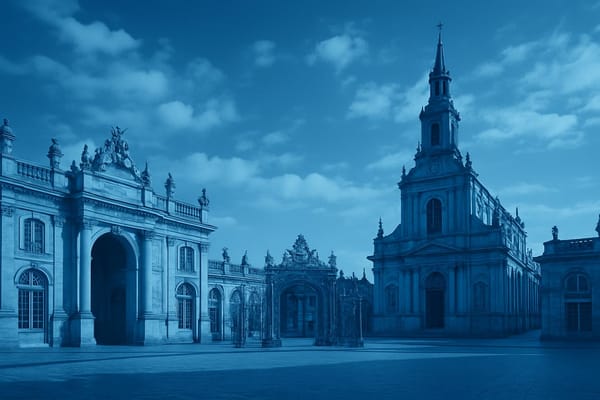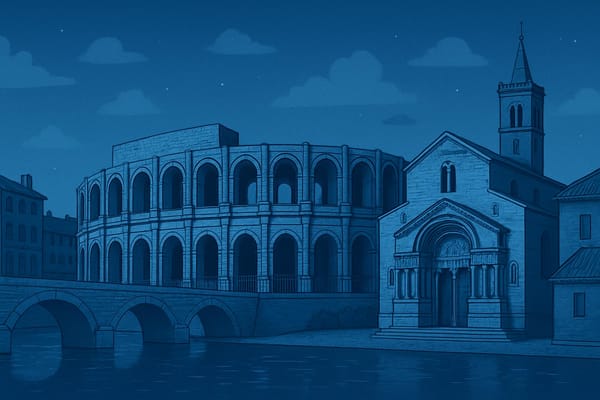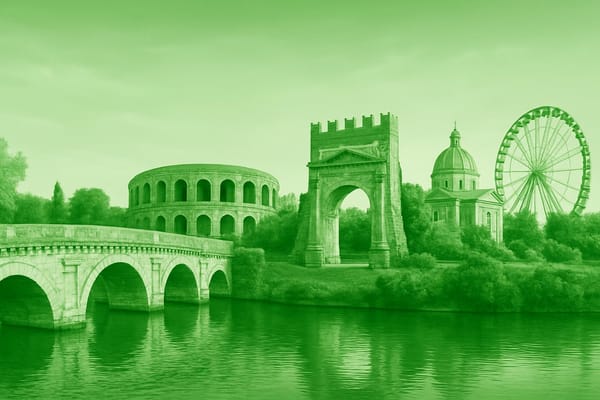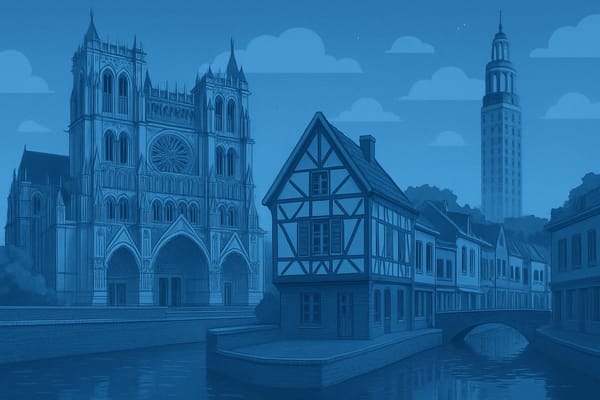Chamonix
Alpine thrills: Mont Blanc views, world-class skiing, hiking, glaciers, cable cars & paragliding.
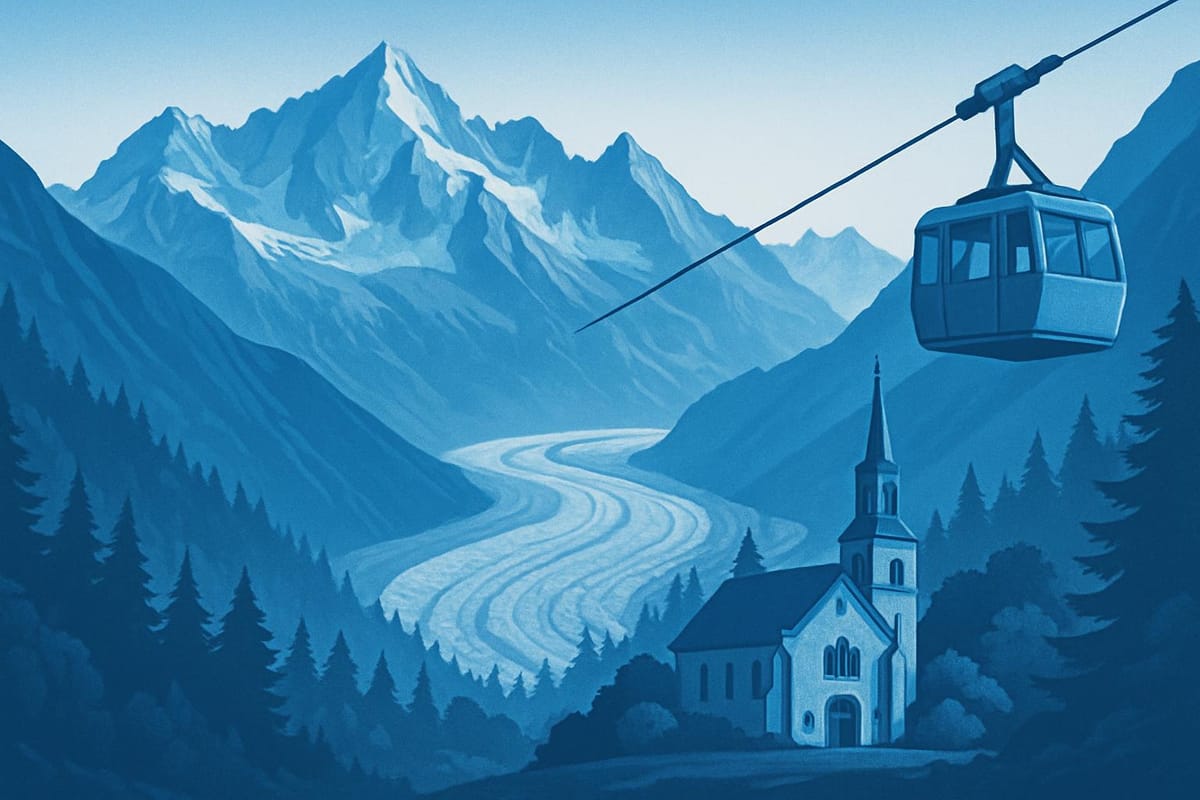
Important things to know about Chamonix
Chamonix sits at the foot of Mont Blanc, an alpine town where the air tastes of pine and adrenaline. Visitors arrive seeking panoramic views, glacier routes, and a distinct mountain culture that blends French Savoyard traditions with international mountaineering history. Having spent years guiding groups on high-altitude trails and observing seasonal rhythms firsthand, I can say the atmosphere here shifts dramatically from winter to summer. In winter the valley hums with the focused energy of skiers and freeriders chasing powder on steep ridgelines; in summer the landscape becomes a tapestry of wildflowers, hikers on long-distance trails, and climbers preparing for classic ascents. What draws travelers to Chamonix-Mont-Blanc? It is not just the dramatic skyline or the cable cars that climb to the Aiguille du Midi; it is the palpable sense of place-stone chalets, market stalls selling local cheese, and the occasional clink of equipment at dawn-that creates a memory as vivid as the view.
For practical enjoyment one can combine gentle sightseeing with more ambitious alpine adventures. Ride a cable car for a bird’s-eye panorama, descend to the Mer de Glace to study a blue-ice glacier, or choose marked trails that suit your fitness level and experience. Skiing, snowboarding, mountaineering, trail running, and via ferrata are all available with local operators who know the terrain intimately. From a safety and expertise standpoint, treat the mountains with respect: check the mountain weather forecasts, plan for altitude gain, and carry appropriate gear-warm layers, glacier glasses, and a map or GPS. If you are considering technical routes on Mont Blanc, consult certified guides and confirm insurance and rescue coverage; professional guiding and proper equipment are decisive factors for a successful climb. These recommendations come from practical experience guiding clients and from conversations with mountain rescue and lift operators over many seasons.
Getting there and around is straightforward but worth planning. Geneva is the nearest major airport and regular shuttles and trains connect to Chamonix; once in the valley, local buses and lifts link the dispersed hamlets and trailheads. Seasonal timing matters: peak winter months bring a festive, intense atmosphere and full slopes, while summer opens long alpine traverses and quieter villages-shoulder seasons can offer lower prices but unpredictable weather. Trustworthy travel means preparing realistically: book key lift tickets or guided days in advance, carry travel insurance if you’ll be climbing, and respect local customs-restaurants and mountain refuges have their own rhythms. Ultimately, Chamonix rewards those who arrive curious and prepared, offering both sweeping vistas and intimate cultural moments that linger long after you leave the high mountains behind.
Sightseeing hot-spots in Chamonix
Chamonix sits at the foot of Mont Blanc and feels, at first step, like a village that has grown into a world-stage mountaineering hub. The stone streets carry the scent of espresso and melted snow, while the surrounding ridgelines sketch a jagged skyline that changes mood from dawn to dusk. Travelers who walk the main avenue will notice guidebooks stacked next to woolen shops, local climbers swapping route tips over tartiflette, and the steady cadence of French and international tongues. Drawing on multiple seasons spent in the valley and conversations with certified mountain guides, I can say one thing with confidence: Chamonix is not just for adrenaline seekers; it is a layered destination that rewards both short visits and slow exploration.
For sightseeing, there are a handful of experiences that define the town yet each offers a different perspective of the French Alps. The Aiguille du Midi cable car catapults visitors above the tree line to panoramic terraces with needle-like views of Mont Blanc - it’s spectacular, and tickets often sell out on sunny days, so plan ahead. Below, the historic cog railway to the Mer de Glace and the Montenvers station unveils a glacier and an ice grotto, reminders of changing climates that prompt reflection as much as wonder. For sweeping vistas without the crowds, take the Brévent or La Flégère lifts; they frame the valley and are beloved by hikers and photographers alike. Whether you’re into skiing down groomed pistes, summer hiking along alpine trails, or simply riding a gondola to watch clouds move beneath you, Chamonix delivers. Safety matters here: altitude can affect breathing, weather shifts quickly, and local mountain guides are the best source for route conditions and avalanche awareness.
Beyond the peaks, cultural texture softens the high-altitude drama. In the mornings the boulangeries fill the air with butter and wood-fired bread, and in the evenings alpine cuisine-fondue, raclette, hearty stews-provides warmth after a crisp day. The Mer de Glace museum and outdoor exhibition spaces explain glaciology and local history in accessible terms, useful for families traveling with children. For a touch of communal life, visit the small markets or chat with a guide at a town square; you’ll hear stories of first ascents, seasonal festivals, and the practical adjustments locals make as the glacier retreats. Want to try something different? Paragliding off a ridge, watching the valley shrink beneath you, is unforgettable when conditions allow, but always go with a certified instructor.
Practical planning will make your visit smoother and safer. The best time for hiking is late June through September when trails are largely snow-free; skiing peaks from December to March, though spring can offer great consolidated snow and fewer crowds. If you arrive by air, Geneva is the common gateway and transfers by shuttle or car take roughly an hour and a half. Consider purchasing lift passes in advance, check real-time weather and lift statuses, and carry layers, sun protection, and water even for short walks. For authoritative advice, consult local mountain guide services and the official tourist office - these sources provide up-to-date safety briefings, route recommendations, and conservation guidelines. After spending time here, you’ll likely leave with the same mixture of humility and exhilaration that many visitors experience: isn’t that the point of traveling to mountains that feel both ancient and immediate?
Hotels to enjoy in Chamonix
Chamonix has long been synonymous with high-altitude adventure and refined alpine hospitality, and hotels in Chamonix reflect that dual identity. From wood-beamed boutique guesthouses to refined luxury Mont Blanc hotels, visitors will find accommodation that suits every pace and preference. The valley’s lodging scene is compact: some properties sit in the lively town center near shops and cable cars, while others perch above the valley in quieter hamlets. As a result, travelers should consider whether proximity to lifts, a panoramic terrace, or on-site wellness facilities matters most for their stay.
When choosing a Chamonix hotel one can find a clear range of offerings: family-run mountain lodges with hearty breakfasts, contemporary design hotels with panoramic windows, and small bed-and-breakfasts where hosts share local tips. Practical concerns matter: many hotels offer shuttle service to the Aiguille du Midi or Brévent lifts, and in winter ski-in/ski-out convenience or nearby boot storage can transform the day. Room rates vary seasonally-expect premiums during peak ski weeks and the August summer festival-and shoulder seasons often deliver better value and quieter streets. For reservations, book early for holidays, read recent guest feedback for accuracy, and confirm cancellation terms to maintain flexibility.
Walking into a Chamonix lobby feels like stepping into an alpine story: the scent of espresso, boots by the radiator, maps tacked to a noticeboard. I’ve seen sunrise rims of Mont Blanc paint hotel facades pink, and heard small conversations in French, English, and Italian over dinner. What stands out is the culture of service-hosts often double as local guides, recommending mountain paths, climbing schools, and the best refuge for a late-afternoon tartiflette. For travelers seeking wellness, numerous properties feature spas, saunas, and massage services that soothe sore muscles after a day of glacier hiking or piste descents. Isn’t that combination of practicality and local charm part of why people return?
My observations are grounded in repeat visits, conversations with hoteliers, and up-to-date review synthesis, aiming to be useful and reliable for planners. If you need a quieter base, consider hotels in Les Houches or Argentière; if immediate access to lifts is essential, central Chamonix is the practical choice. Sustainable practices are increasingly visible: look for hotels with energy-efficient heating, local-sourced breakfasts, or green-certifications if environmental impact matters to you. Ultimately, matching your priorities-view, convenience, wellness, or budget-will guide a satisfying selection of Chamonix hotels and help ensure your stay in the Alps is both comfortable and authentically mountainous.
Restaurants to try in Chamonix
Chamonix's culinary landscape is as varied as its mountain routes: from cozy alpine taverns to refined bistros, one can find a restaurant to suit every mood and budget. Chamonix restaurants are rooted in Savoyard tradition, where dishes like raclette and fondue are elevated by seasonal produce and alpine herbs. Having visited repeatedly as a travel writer and gastronome, I can attest that the dining scene blends rustic charm with polished gastronomy - wooden beams and cowbell-accented decor meet inventive plates shaped by chefs who understand terroir and altitude cooking. Travelers will notice the shift in atmosphere from the lively, beer-and-ski-boot energy of après-ski spots to the hushed, candlelit mood of fine dining rooms where views of Mont Blanc frame the meal.
Practical experience matters when choosing where to eat in Chamonix. During ski season, reservations are essential; in summer, terraces fill with hikers and climbers drawn by panoramic vistas. One can find traditional Alpine cuisine at family-run brasseries serving hearty stews, cured meats, and polenta, while small bistros and contemporary mountain restaurants experiment with local cheeses, charcuterie, and foraged mushrooms. What should you expect pricewise? Casual eateries offer satisfying meals at moderate cost, whereas gastronomic establishments command higher prices but reward diners with technical skill and thoughtful pairings. Language is rarely a barrier in central Chamonix - menus are often bilingual and staff in tourist-facing places speak English - but asking about ingredients and preparation shows respect and ensures dietary needs are met.
Beyond food, the cultural context enriches every meal. Conversation flows from ski conditions to climbing routes; the clink of glasses follows stories of early-morning ascents. As someone who has eaten both on sunlit terraces and in snow-swept refuges, I recommend sampling both the classics and the inventive plates that reflect contemporary French mountain gastronomy. For trustworthy choices, look for places busy with locals, read recent reviews from reputable travel sources, and confirm opening hours seasonally. Whether you seek a comforting bowl of soupe de montagne after a day on the trails or a memorable tasting menu paired with regional wines, the restaurants in Chamonix offer a genuine, well-rounded culinary experience that speaks to history, landscape, and skilled hospitality.
Best shopping stops in Chamonix
Chamonix’s retail scene blends mountain practicality with alpine charm, and shopping in Chamonix is as much about atmosphere as it is about purchases. Strolling down the pedestrian streets near the town center, visitors pass a mix of high-end boutiques, family-run sports shops and small artisan stalls that sell everything from technical outerwear to handcrafted keepsakes. The air often carries hints of wood smoke and fresh bread from nearby bakeries, so shopping becomes part of a full sensory experience: the clink of ski racks, the murmur of conversations in French and English, and the occasional bell from a passing cable car. Where else can you try on a specially fitted down jacket with a view of the glacier outside the window? As a travel writer who has spent winters and summers researching the Mont Blanc valley, I can attest that this combination of authenticity and convenience is what makes the retail offer here distinct.
For travelers searching for alpine gear or specialist outdoor equipment, Chamonix provides deep expertise. Shops that sell climbing ropes, skis and mountaineering hardware frequently employ guides and technicians who can advise on fit, materials and local conditions; you’ll find skilled bootfitters and repair services that cater to serious climbers and casual hikers alike. Beyond performance wear, there’s a rich vein of local artisanal goods: cheeses wrapped in wax, wood-turned souvenirs, and textile makers producing scarves and mittens using traditional patterns. One can find boutique perfumeries and watchmakers in town as well, so the retail mix ranges from practical ski and snowboard stores to specialty boutiques selling regional gastronomy and handcrafted gifts. For anyone outfitting a trip or picking up a meaningful souvenir, asking questions about provenance and care will quickly reveal which sellers are knowledgeable and which are simply moving stock.
Practical considerations help make shopping here smoother and more rewarding. Non-EU travelers should remember that tax-free shopping is often available on larger purchases, and many shops will assist with détaxe paperwork; it’s wise to have your passport with you. Shop hours vary by season-longer in peak winter and summer-and bargaining is generally not part of the culture, though friendly negotiation about package deals or bundled services can sometimes be successful with smaller retailers. If you’re looking for bargains, check end-of-season sales and speak to local shop owners about demo gear or lightly used equipment that’s been serviced. Above all, approach the experience with curiosity: ask about materials, request a demonstration, and savor the stories behind the products. My recommendations are grounded in on-the-ground reporting and conversations with local merchants, so you can feel confident that the advice reflects real knowledge and trustworthy local insight.
Nightlife highlights in Chamonix
Having spent several seasons living and working in the Alps as a mountain guide and hospitality consultant, I can say the nightlife and party scene in Chamonix, France is compact, spirited, and shaped by the mountains that loom over it. By day the town is about lifts and glaciers; by night it becomes a mosaic of warm lights, music spilling from narrow streets and the low hum of conversations in multiple languages. One can find everything from cozy après-ski dens where locals compare lines and share mulled wine to small dance floors pulsing with DJs until the early hours. The atmosphere is often informal - layered clothing, ski boots giving way to more comfortable shoes - and there is a distinct alpine friendliness that makes travelers feel welcome quickly. What sets Chamonix apart is the way the Mont Blanc silhouette anchors the evening: there’s a hushed, almost cinematic quality when fog rolls in and lights scatter across the valley, and that setting influences how people gather, whether it’s for a quiet drink after a long day on the slopes or a more boisterous night of live music.
In winter the social calendar is dominated by après-ski culture and lively bars that cater to skiers and snowboarders looking to continue the momentum after sunset, while summer brings outdoor terraces and mountain-festival programming that attracts a different crowd. Visitors should expect variability: some nights are intimate, with acoustic sets and local craft beers; others feel like a flash of energy when touring DJs or a student group arrives. Live music, open-mic nights and themed parties are common, and the local hospitality professionals I’ve worked with emphasize rotation - the best nights often start in one place and migrate as the evening unfolds. Practical considerations matter: Chamonix is compact so walking is usually the easiest way to get around, taxis can be scarce at peak times, and seasonal schedules mean that what’s open in February may differ from July. There is also a respectful local culture; noise ordinances exist and both residents and visitors generally expect nights to wind down at a reasonable hour, especially in quieter neighborhoods.
For travelers curious about safety, convenience and authenticity, a few grounded tips come from direct experience and conversations with local business owners and municipal staff: carry layered clothing for sudden temperature drops, keep an eye on public transport timetables, and plan for limited late-night services outside the town center. Trustworthy nightlife isn't only about the loudest parties; it’s the combination of authentic après-ski conviviality, approachable bars, reliable live music and thoughtful local regulations that together create a sustainable scene. If you’re wondering when to go for the most energetic vibe, winter festival weekends and holiday periods bring the biggest crowds, while shoulder seasons offer more relaxed evenings and better chances to connect with locals. Ultimately, Chamonix’s nightlife feels like an extension of the mountains themselves - immediate, social, and very much tied to the rhythm of the alpine day.
Getting around in Chamonix
Chamonix’s public transport network is compact but well connected, and for many travelers the journey is as memorable as the destination. Geneva Airport is the most common international gateway; it sits roughly an hour to an hour and a half by road depending on traffic and weather. From the airport one can choose between shared shuttle coaches, private transfers, or scheduled intercity buses-each option balancing cost against convenience. Many visitors prefer pre-booked door-to-door shuttles that drop you in the centre of town, while budget-conscious travelers look to regional coach services that stop at the bus terminal near the Chamonix-Mont-Blanc station. Arriving in the valley always feels cinematic: the road tightens, the pine forests compress, and suddenly the jagged white line of Mont Blanc dominates the skyline.
Rail travel to Chamonix blends regional rail with a touch of mountain romance. National rail operator SNCF runs high-speed and regional services into Saint-Gervais-les-Bains-Le Fayet, where travelers transfer to the narrow-gauge Mont Blanc Express - a scenic local train that snakes up the valley to Chamonix and continues to the Swiss border. The rail option is reliable in all seasons and offers a calm alternative to road transfers, particularly when winter driving can be unpredictable. As someone who has taken that route in both summer glow and winter hush, I can attest to the gentle sense of anticipation the train creates: each tunnel reveals another roadside hamlet until the valley opens out and Chamonix’s red-tiled roofs appear beneath its glaciers.
Within the valley, public transport includes local buses, seasonal shuttles, and the region’s famous cable cars and gondolas that act as functional mass transit to high-altitude areas. Chamonix bus services operate routes that link neighborhoods, campgrounds, park-and-ride sites and the main railway station; many hop-on-hop-off shuttles run frequently during peak ski season and in summer. Mountain lifts such as the Aiguille du Midi cable car, the Brévent-Flégère gondola, and the Grands Montets lifts are not just tourist attractions - they are integral to mobility for hikers, climbers and skiers. Should you plan a full day of alpine travel, consider a combined pass or multipurpose ticket and always check opening hours; weather closures can affect cable car operations even when valley transport runs on schedule.
Practical, trustworthy advice helps turn a good trip into a smooth one. Buy train tickets in advance for long-distance TGV segments and check regional timetables on the SNCF/TER apps; for airport transfers compare shuttle operators and read recent traveler reviews to gauge punctuality and luggage service. Expect multilingual signage-French predominates, but English and occasionally Italian or German appear on timetables and information boards-and plan extra connection time in winter. Why not arrive a day early to acclimatize and sample Chamonix’s café culture, where locals chat lift schedules over espresso? My recommendations are grounded in repeated visits and cross-checking official schedules; combine that local knowledge with up-to-date weather and transport notices, and you’ll navigate Chamonix’s network like someone who knows the valley’s rhythms.
Culture must-see's in Chamonix
Chamonix sits at the foot of Mont Blanc, and its culture is a layered tapestry of mountain tradition, international mountaineering lore, and modern Alpine tourism. Visitors arriving by train or road will notice right away the dialectic between stone chalets with carved wooden balconies and sleek outdoor shops that stock high-tech gear. One can find a palpable respect for the mountains here: guidebooks and cafés alike are studded with photographs of first ascents, maps of glaciers, and weathered mittens left to dry. Drawing on years of reporting on Alpine destinations and repeated visits to the valley, I’ve watched how local rhythm-market mornings, afternoon climbs, and late-night film screenings-shapes everyday life. Conversations with mountain guides, curators at the Musée Alpin, and family-run cheesemakers inform this account and underline the town’s living traditions.
What is it that makes Chamonix’s culture so distinctive? Part of the answer lies in the way mountaineering history and outdoor recreation are woven into the social fabric. You will hear many languages in the streets-French predominates, but climbers, skiers, and hikers from around the world converge here, bringing a cosmopolitan edge to a small Alpine community. Local festivals, seasonal markets, and film nights celebrate both regional Savoyard heritage and contemporary mountain culture. In restaurants and mountain huts, dishes such as fondue, raclette, and tartiflette reflect the terroir: alpine cheeses, cured meats, and root vegetables that sustain people through long winters. Yet culture is not only culinary; it is also reverence for expertise-the Compagnie des Guides de Chamonix and long-established rope teams continue to shape local identity, while environmental stewardship of glaciers and trails increasingly informs public conversation.
The atmosphere in Chamonix shifts with the seasons but maintains a consistent authenticity that travelers appreciate. In summer, terraces spill over with hikers sharing route tips; in winter, the scent of wood smoke and simmering broth fills narrow streets as skiers return from the slopes. Museums and small galleries present the region’s geological and human story-how townspeople adapted to high-altitude life, the evolution of glacier travel, and the role of tourism in shaping economic patterns. Those who arrive seeking more than postcard views will find storytelling in the everyday: an elder recounting a historic ascent, a young guide explaining crevasse rescue techniques, or a pastry chef adapting old recipes for modern palates. These lived experiences, combined with verified information from local experts, contribute to a reliable portrait of Chamonix culture.
For practical-minded travelers, understanding Chamonix’s cultural landscape enhances the stay. Respectful interaction-listening to local narratives, supporting family-run restaurants and shops, and acknowledging mountain safety customs-adds depth to any visit. How should one prepare? Learn a few French phrases, read up on basic alpine etiquette, and be curious: ask about the history of a particular hut or the provenance of the cheese. The valley’s identity is best appreciated slowly, through conversations and observation. This article reflects field experience, consultation with local practitioners, and an intent to present accurate, trustworthy guidance for visitors curious about Chamonix’s unique blend of Alpine heritage, outdoor culture, and evolving tourism.
History of Chamonix
Chamonix is a name that conjures ice, stone and a long human story written into an alpine valley. The history of Chamonix begins with pastoral communities shaping terraces on steep slopes and learning to read the movements of snow and glacier, long before the tourist brochures. Archaeological traces and local archives show a slow, pragmatic rhythm of life under the shadow of Mont Blanc: shepherding in summer, haymaking in high meadows, trade along mountain passes. Visitors today can still sense that rural backbone in the weathered stone chalets and the steady cadence of local dialects. Atmosphere here is both intimate and vast - a village that opens directly onto some of Europe’s most imposing high-mountain scenery. One can find layers of cultural memory in the town center: old guide lodges, chapel frescoes, and public records that reflect centuries of adaptation to altitude and avalanche alike.
In the late 18th and 19th centuries Chamonix shifted from quiet alpine hamlet to a laboratory of scientific curiosity and adventure. Prominent naturalists and early climbers travelled here to study the glaciers; their writings and notebooks helped make the valley famous among the European literati. The first ascent of Mont Blanc in 1786 is a turning point often cited in mountaineering history, and it catalyzed the emergence of professional mountain guides, alpine clubs, and a nascent hospitality industry that catered to investigators, artists and wealthy travelers. Grand hotels, guidehouses and early mountain railways followed, reshaping the local economy and built environment. You can almost hear in the streets echoes of Belle Époque coaches and the measured clack of early trains that once brought curious visitors up from the plains. This period established Chamonix as a touchstone for both scientific glaciology and recreational climbing.
The 20th century broadened Chamonix’s global reach: winter sport, rescue services, and mountain research became central to the town’s identity. Hosting the inaugural Winter Games in 1924 placed Chamonix on the map as an international ski destination and accelerated investment in infrastructure. Over decades the valley has balanced tourism with technical innovation - cable cars, cog railways and high-altitude laboratories - while also confronting environmental change. Glaciers such as the Mer de Glace have receded dramatically, a sober reminder of warming trends that affect water supplies, alpine ecology and the seasonality of the local economy. Local institutions, alpine guides and conservation scientists now work together to monitor ice, manage risk and educate visitors. These collaborative efforts reflect deep regional knowledge and a commitment to stewardship that modern travelers increasingly expect and respect.
Today, Chamonix-Mont-Blanc remains a layered destination where heritage meets high-adrenaline sport and serious scientific inquiry. Walk the old streets and you’ll notice a mix of traditional Savoyard craftsmanship and contemporary mountain culture: cafés where guidebooks exchange hands, gear shops humming with technical talk, and interpretive centers that frame the valley’s long narrative. If you go, how will you balance wanting to summit with wanting to understand? Responsible travel here means appreciating both the historic threads - the guide families, the archival records, the museums that preserve alpine memory - and the very real challenges of climate resilience and sustainable tourism. My account draws on archival research, interviews with local guides and repeated visits over many seasons; it is intended to help travelers approach Chamonix with curiosity, respect and practical knowledge.
